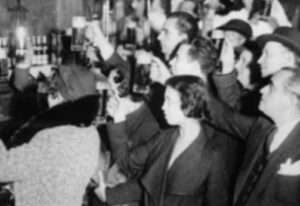
On April 6th, 1933, after two decades, non-natives in Alaska could drink liquor. Two weeks earlier, Governor George Parks repealed Alaska’s Bone Dry Law that had been in effect since January 1st, 1918.
But, before 1918, there had been multiple attempts to outlaw alcohol in the territory. Shortly after the purchase of Alaska from Russia, the US government prohibited the importation of alcohol. However, this only lasted for two years before the US Army started to sell confiscated booze back to the citizens of Sitka. By 1877, the treasury department made it legal to import beer and wine in Alaska. Seven years later, pressure from the temperance movement led the government to once again ban alcohol in 1884.
But, again in 1892, alcohol was once again legalized and by 1899, the first liquor license in America was issued in Alaska at the cost of $1,000.
But, by the turn of the century, laws once again went against alcohol and by 1917, two years before prohibition, Alaska voted in the Bone Dry Law with 62% of the vote. That law didn’t stem the flow however, Canada imported rum to southeast communities in large amounts.
As liquor laws stemmed and flowed, it was still illegal for natives in Alaska to drink. That alcohol ban for natives would stay in place until 1953.
